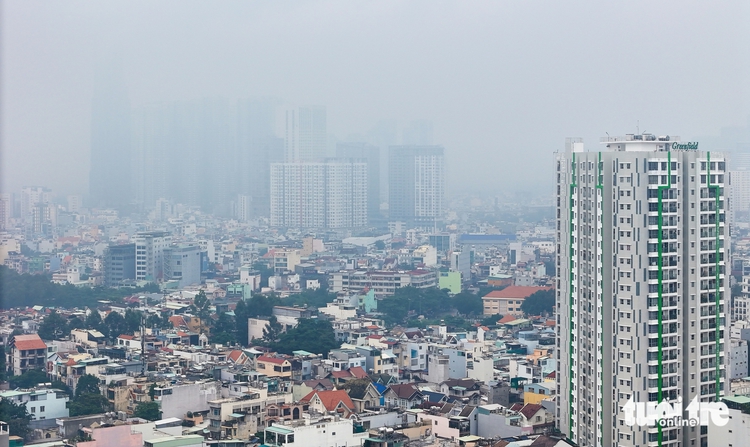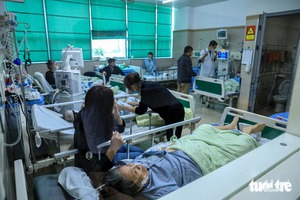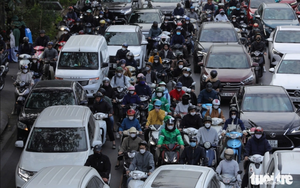
Air pollution across many parts of Vietnam continues to rise in both scale and severity, especially in major cities like Hanoi and Ho Chi Minh City. Photo: Chau Tuan / Tuoi Tre
The city’s Department of Natural Resources and Environment emphasized the urgent need to tackle this issue, especially as air quality continues to exceed permissible standards during certain periods in 2025.
At the Ministry of Agriculture and Environment’s automatic air quality monitoring station on Ly Chinh Thang Street in District 3, the air quality index reached 'poor' levels on January 7, January 14, March 25, and March 26.
Similarly, the monitoring station on Le Huu Kieu Street in Thu Duc City recorded an air quality index at the 'poor' level for three days during the same period.
While the number of days with 'poor' air quality remained relatively low, the average concentrations of fine particulate matter PM2.5 and inhalable particulate matter PM10 continued to surpass Vietnam's national environmental technical regulations.
These findings underline the impact of climate change and abnormal weather patterns, reinforcing the World Health Organization’s warning about the health risks of poor air quality.
In response, the southern Vietnamese city has been committed to its 2020-30 environmental pollution reduction program and a 2024-25 action plan focused on curbing air pollution.
This action plan outlines five key targets to reduce dust and gas emissions, with a special focus on controlling emissions from vehicles which have been identified as the city’s largest source of air pollution.
As per the plan, the Department of Natural Resources and Environment serves as the standing agency responsible for providing advice and coordinating with other departments and local authorities in managing air quality.
The municipal Department of Transport and Public Works has been tasked with cutting traffic-related emissions and helping meet air quality targets.
Deputy Prime Minister Tran Hong Ha has instructed Ho Chi Minh City and other localities to adopt a holistic approach involving policies, planning, technical solutions, and public communication.
Control efforts will extend beyond traffic to include industrial emissions, construction dust, agricultural burning, and waste management practices.
Like us on Facebook or follow us on X to get the latest news about Vietnam!




Max: 1500 characters
There are no comments yet. Be the first to comment.